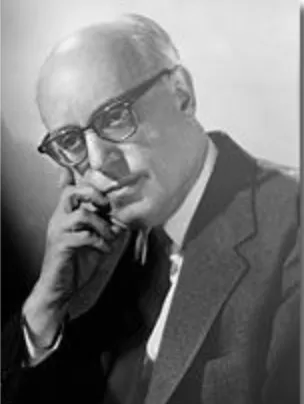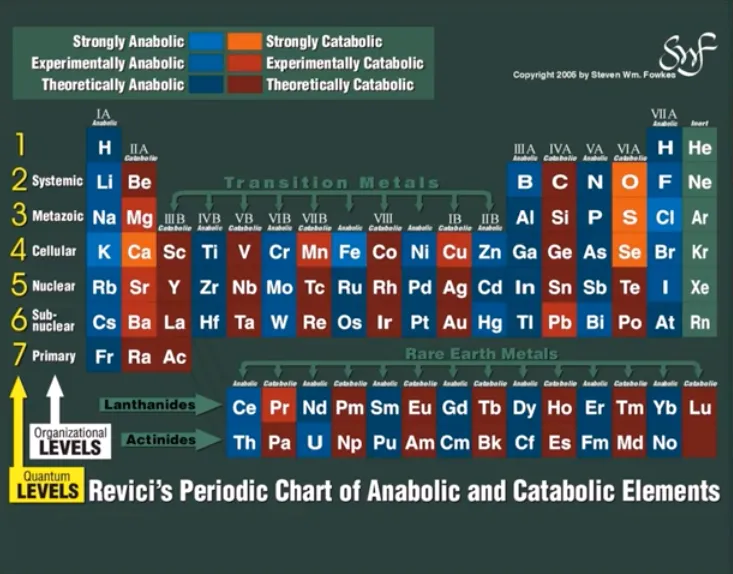

By observing the quantum or energetic properties of lipids in health and disease, Dr. Revici discovered non-toxic lipid chemotherapy that effectively treats pain and cancer, as well as many other symptoms and diseases.
- History of Medicine

Dr. Revici’s complex theories focused on lipids, elements, the organization of matter, and the forces that create and affect matter. Some of his theories such as those concerning the bioactivity of leukotrienes as regulators of inflammatory and allergic reactions, the development of a safe and effective means of lipid transport, the use of selenium to treat cancer and the value of omega-3 fatty acids derived from marine fish oil were later validated by conventional researchers in chemistry and biology.
- M.D. Anderson Cancer Center’s “Reviews of Therapies” website in the 1990s

Emanuel Revici, MD
Emanuel Revici was a professor of medicine in Romania, and then studied in Paris before practicing medicine in New York City for many years.
He was famous for curing many advanced cancers with nutritional therapies based on the insights from his exploratory research.
He developed an understanding of the relationship between the minerals of the periodic table of the elements and the body's anabolic versus catabolic activities.
As you can see in the chart below, the groups (vertical columns) of minerals alternate between anabolic and catabolic effects.
The rows of the table correspond to increasing depth of action in the organism:
1. Cosmic
Hydrogen shows in Revici's system as theoretically anabolic.
On the cosmic scale, Hydrogen makes up 99% of the material universe according in the view of plasma cosmology, so indeed it is Hydrogen that builds the structures of the cosmos.
Ultimately, we can think of a Hydrogen plasma as the fundamental charge carriers, protons and electrons energized by photonic light energy.
Molecular Hydrogen, H2, turns out to be the ultimate antioxidant, and one that cannot be overdosed.
In Bioelectronics of Vincent, rH2, the measure of molecular Hydrogen potential is the clinical measure of electron content that is a prime determinant of biophysical terrain, along with pH, the measure of protons that are the bare Hydrogen nucleus.
In veinous blood measures, the catabolic terrains, Phases 1 and 4, are those with a relative balance of electrons and protons, whether high (Phase 4: Cleanse) or low (Phase 1: Energize).
Phases 2 and 3 are fundamentally anabolic.
In Phase 2: Rejuvenation, the cellular enzymes are being restored. The veinous blood is rich in electrons relative to protons, and therefore characterized as alkaline reduced.
Phase 3: Regeneration see individual cells capable of mitotic production of new cells to restore the tissue. The veinous blood is rich in protons relative to electrons, which we therefore describe as acid oxidized terrain.
2. Systemic
Oxygen is strongly catabolic, being essential for oxidative metabolism in the mitochondria.
On the flip side, deficient oxygen deprives mitochondria of the essential sink for high energy electrons, leading to free radical pathology.
Of course, Oxygen is also the principle component of water, the main compound in the body.
Water itself is much more dynamic than simply the liquid state of bulk H2O as recent water research is showing us...
Structured water is a photosynthetic pathway capable of sustaining life indefinitely without dependence on oxidative metabolism in the mitochondria. As with other aspects of physiology, it seems that we eventually become aware of dual or parallel backup systems for every life function.
3. Organ
Sulfur is strongly catabolic on this level, with Magnesium showing catabolic effects experimentally.
The extracellular plasma such as blood plasma is dominated by Sodium Chloride (common salt), of which both components are in anabolic groups.
4. Cellular
5. Nuclear
6. Subnuclear
7. Primary
© Copyclaim 2023
Remedy Match LLC, DBA Healing Oasis
[email protected]
PO Box 126 Hilo, Hawai'i-Kingdom [96721]
+1 (808) 217-9647
[*"The statements herein have not been evaluated by the Food and Drug Administration. This is not intended to diagnose, treat, cure, or prevent any disease."] T.D.C.
